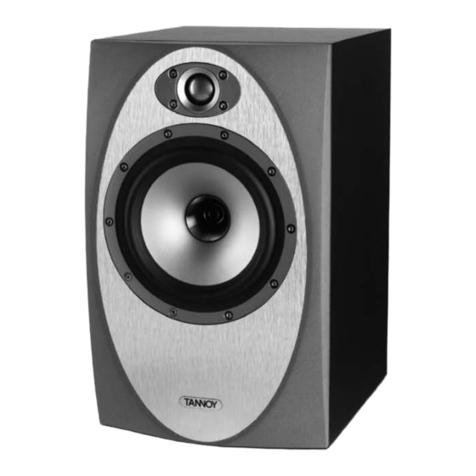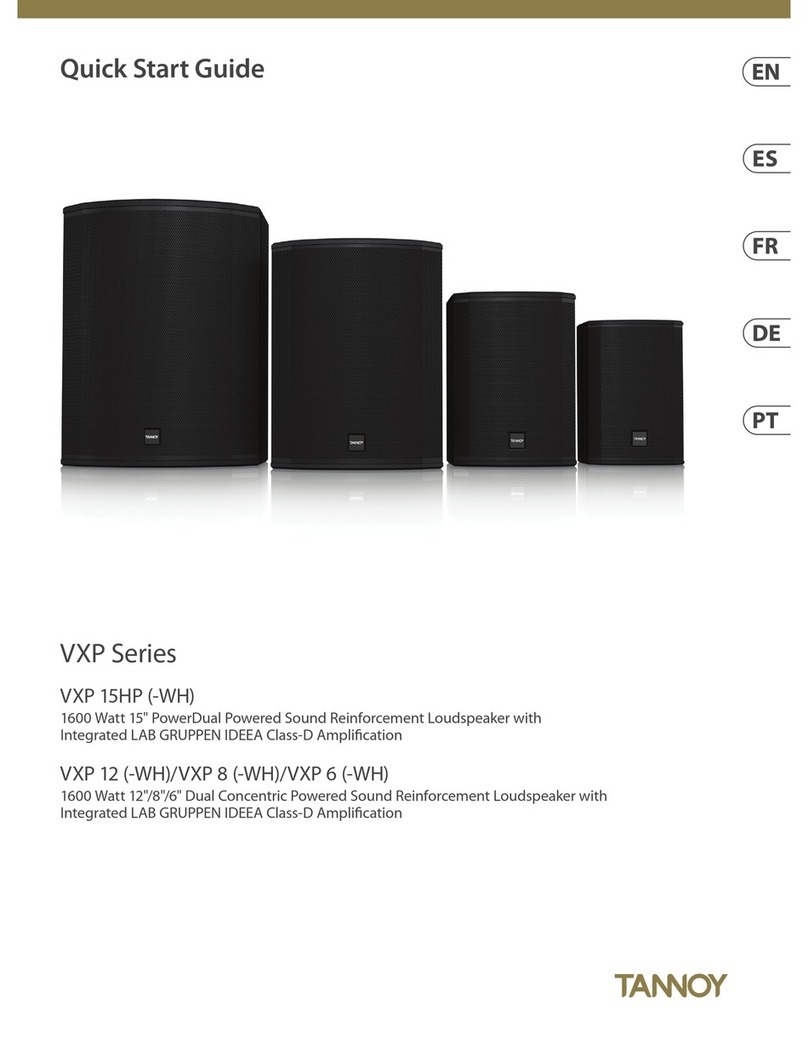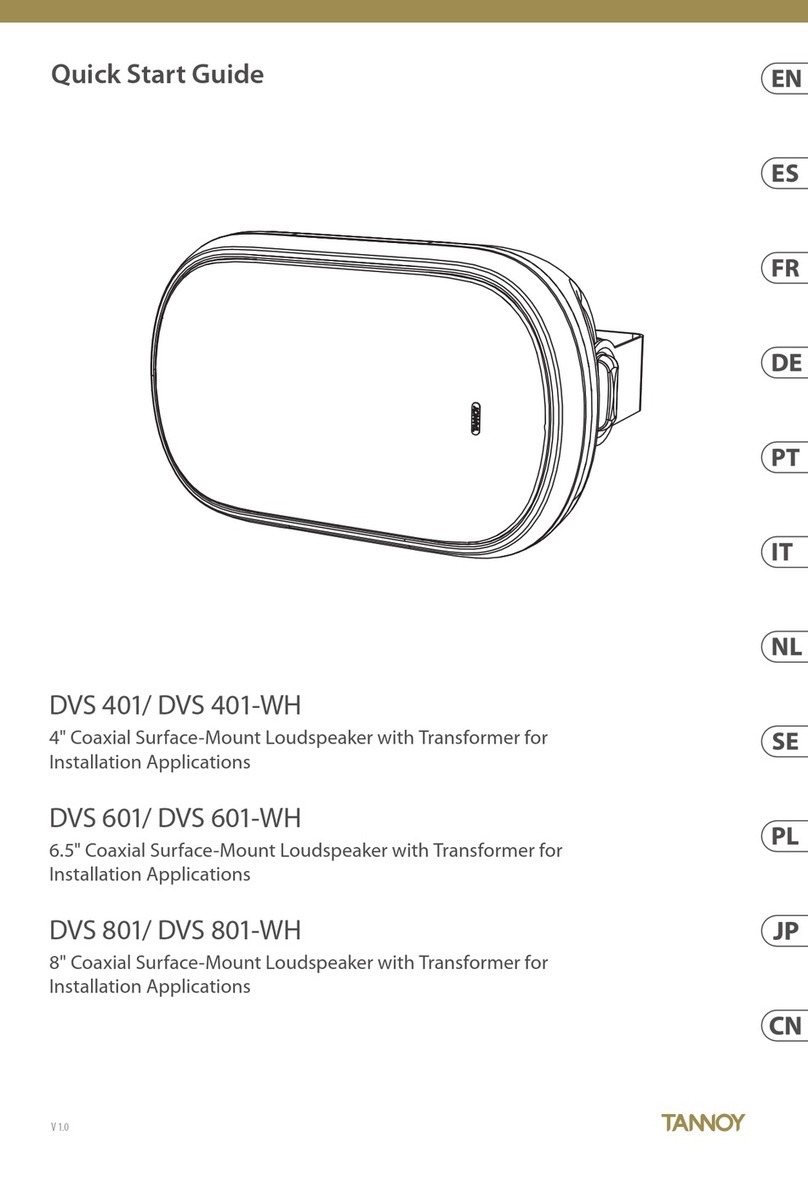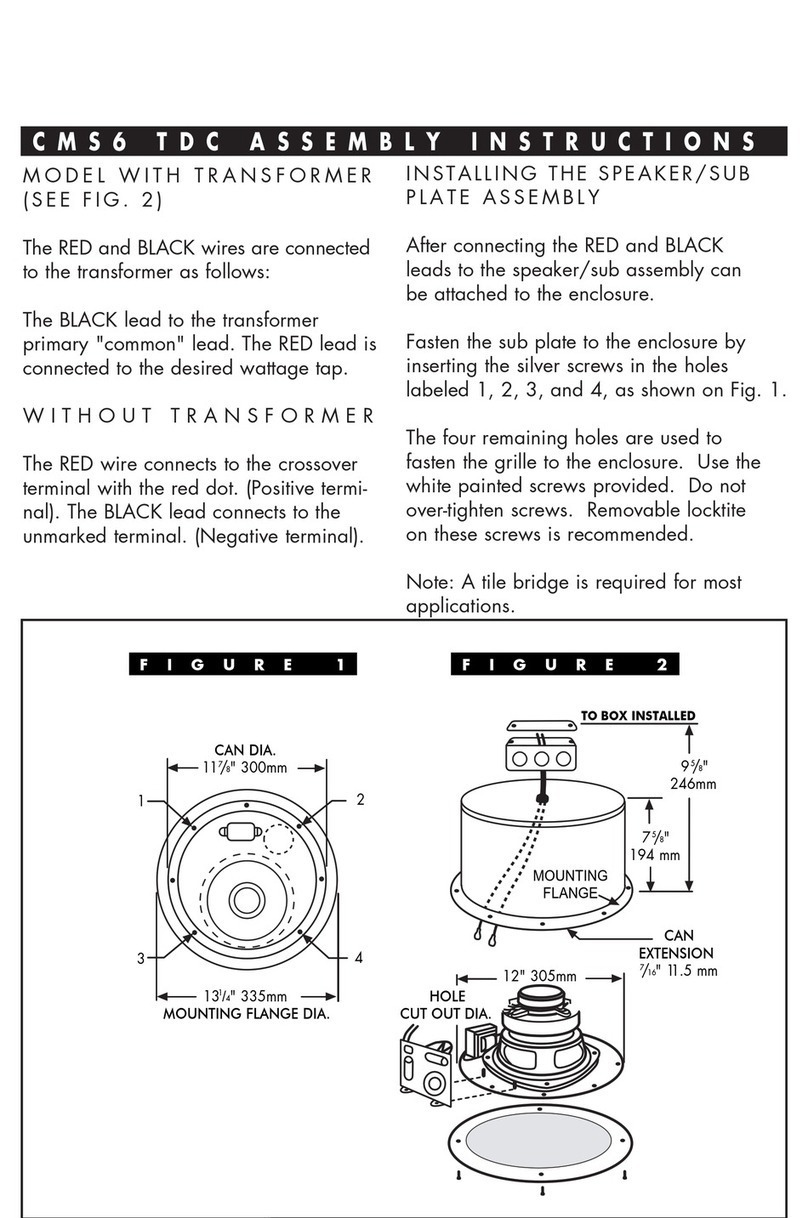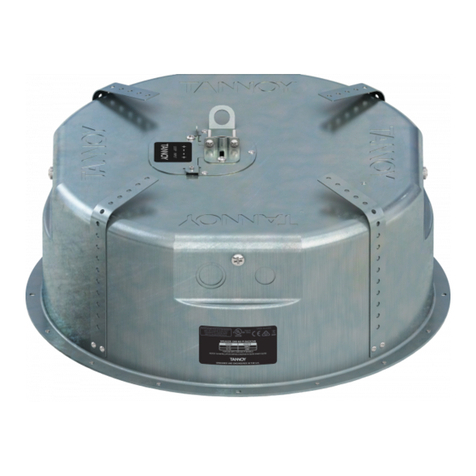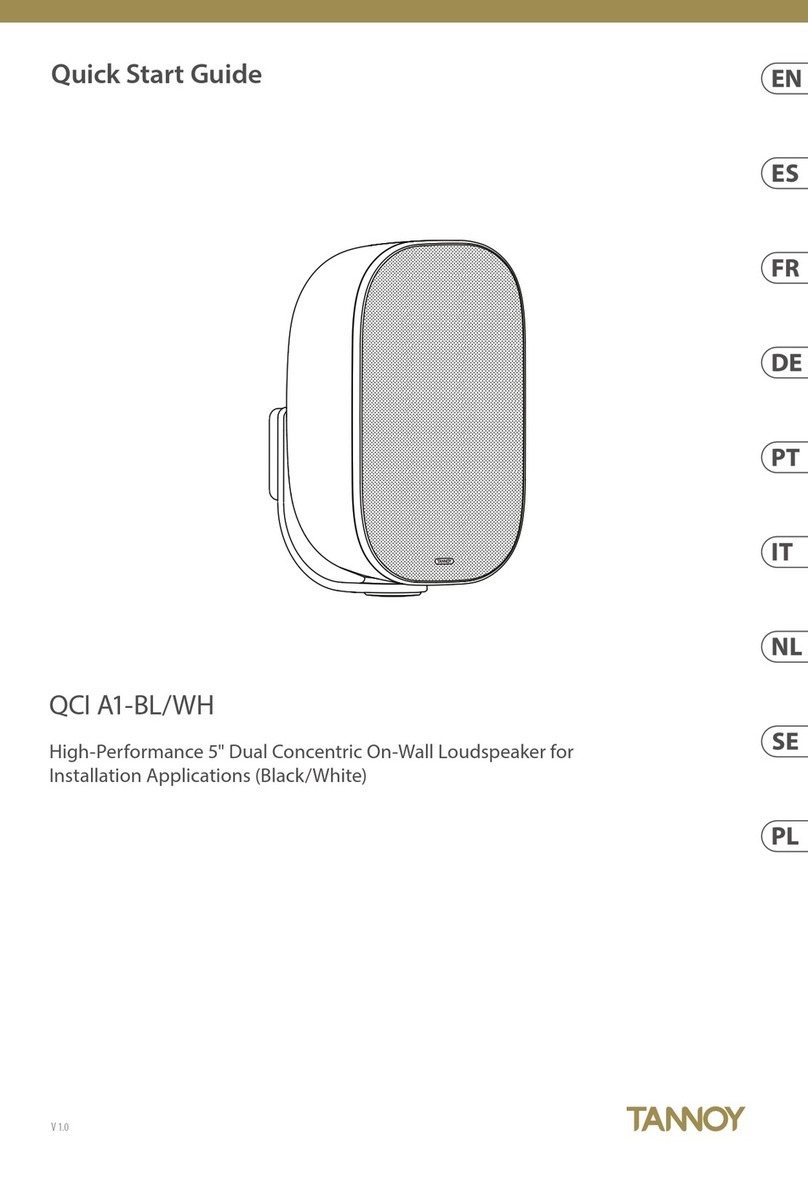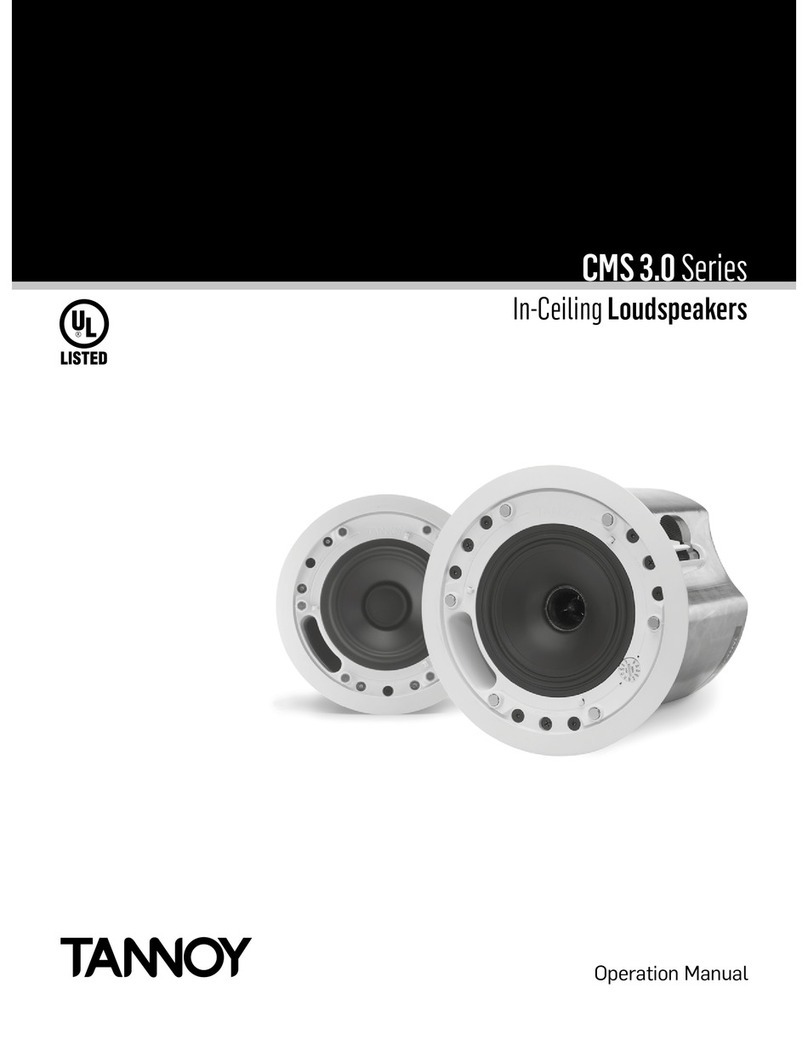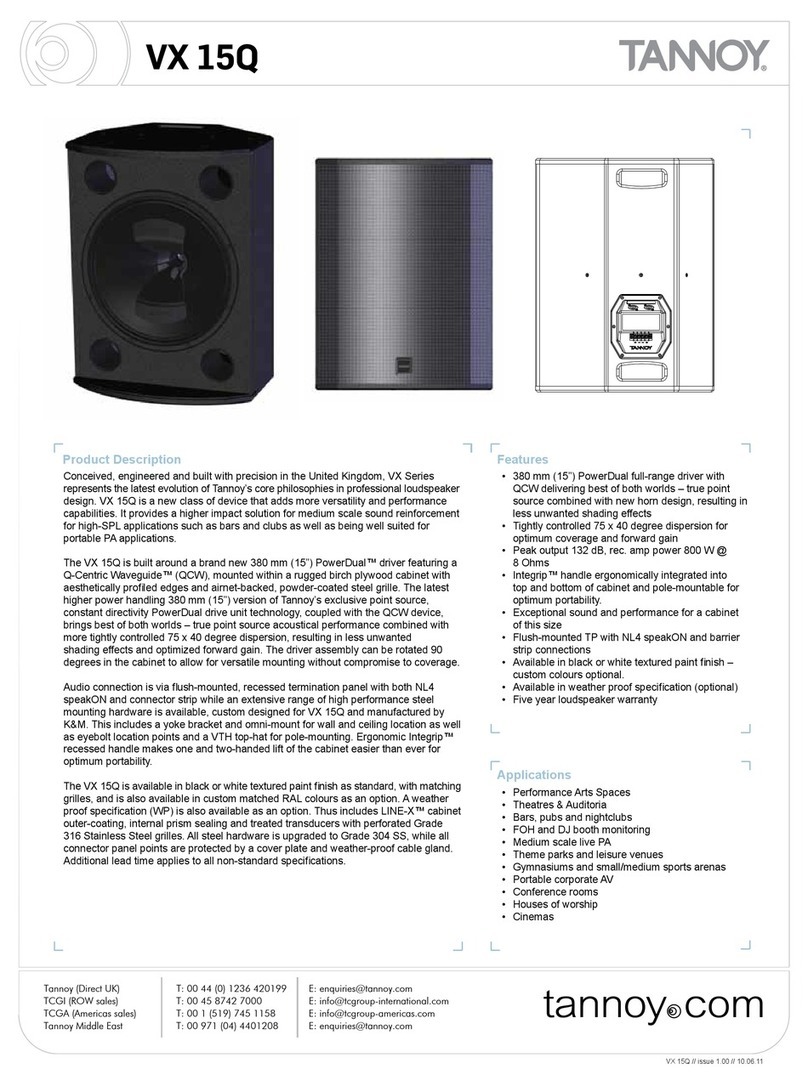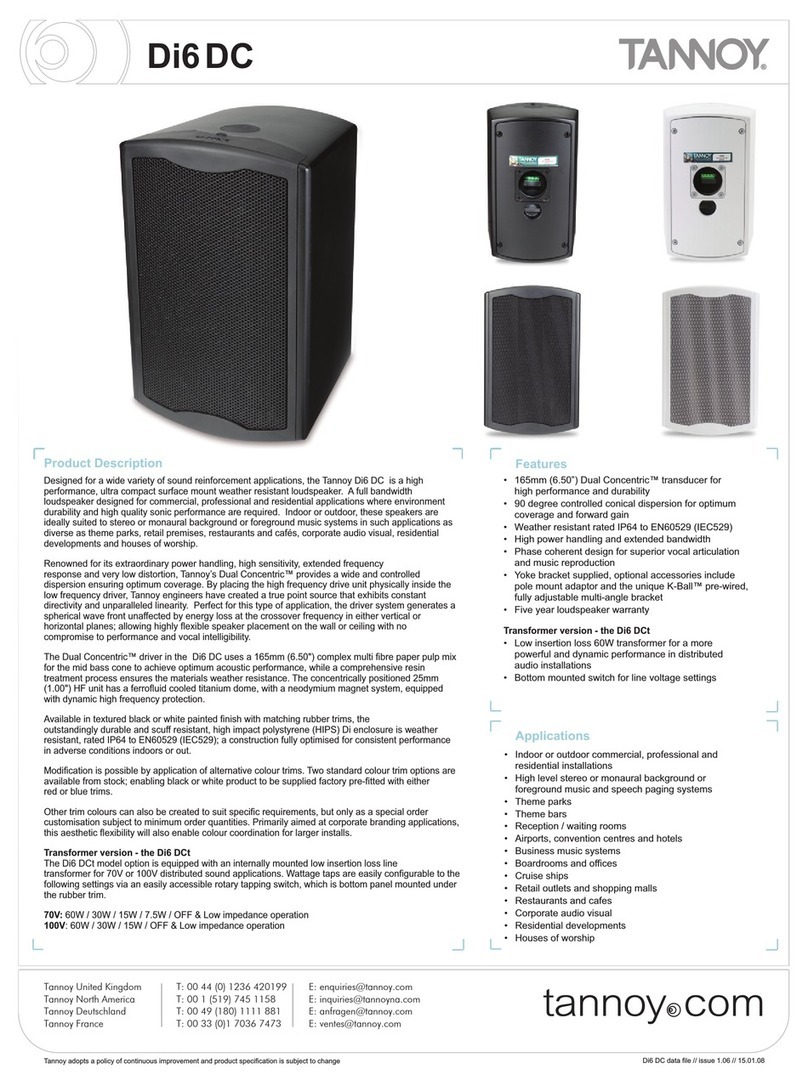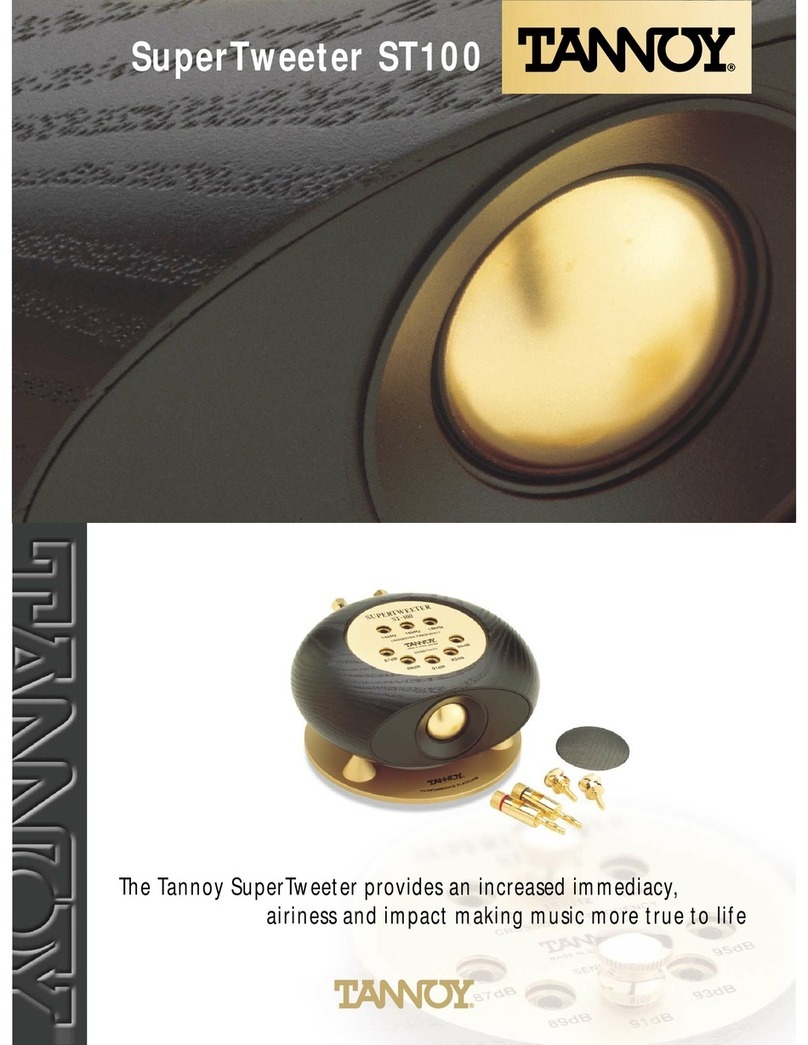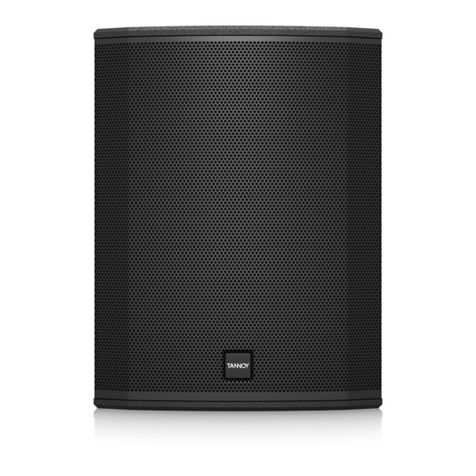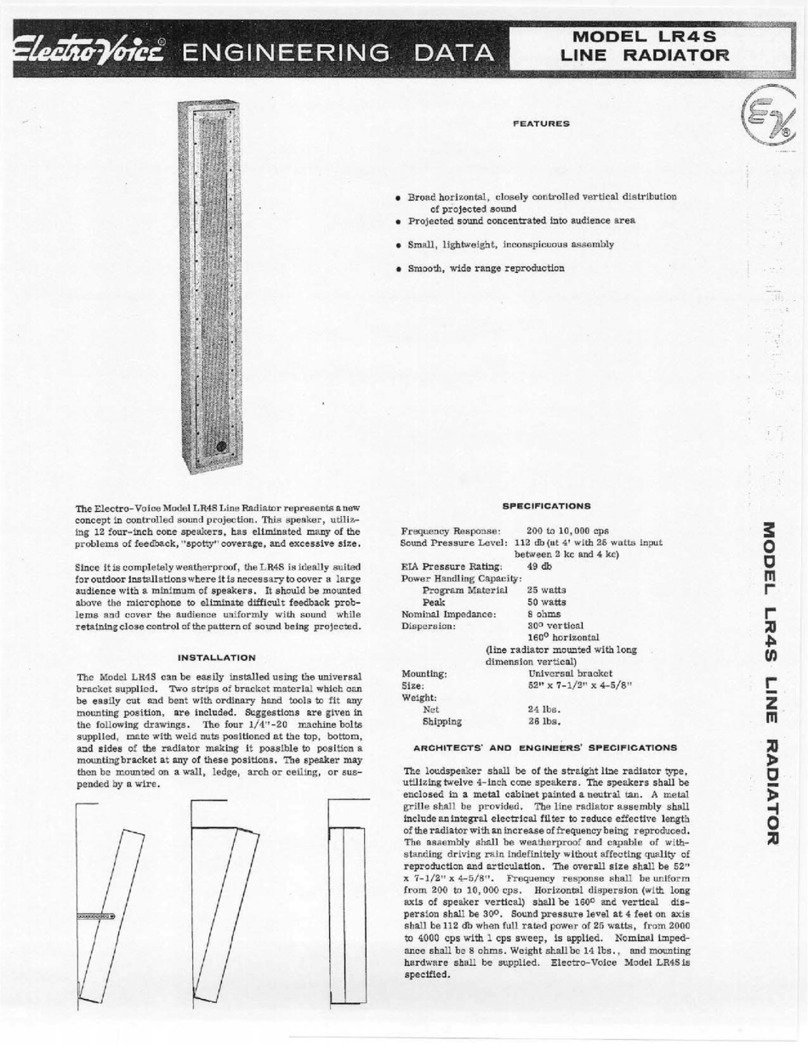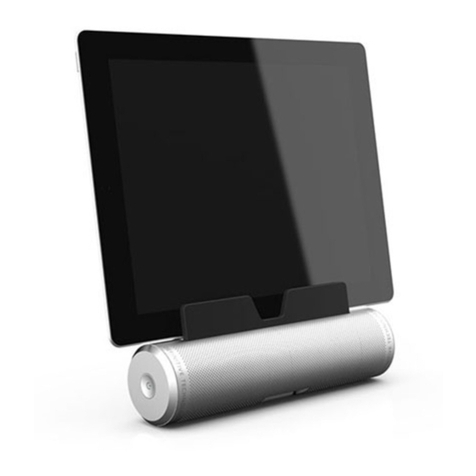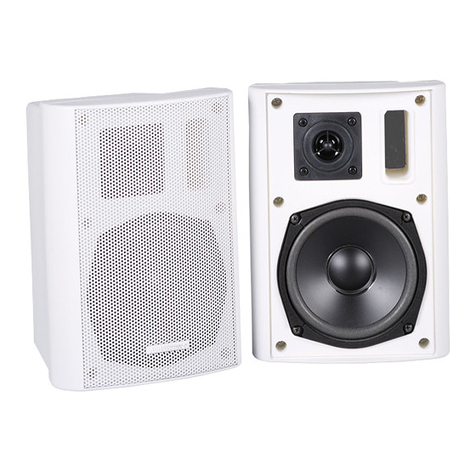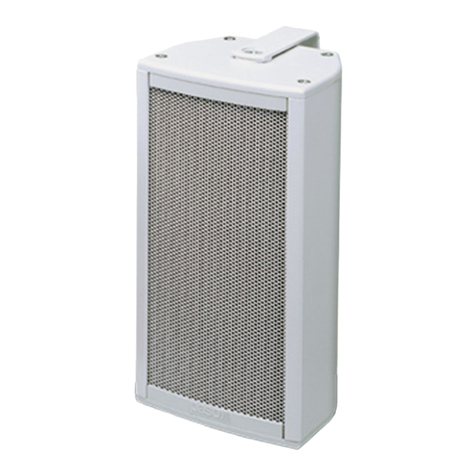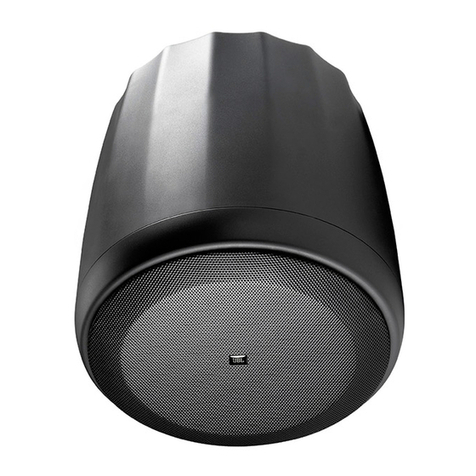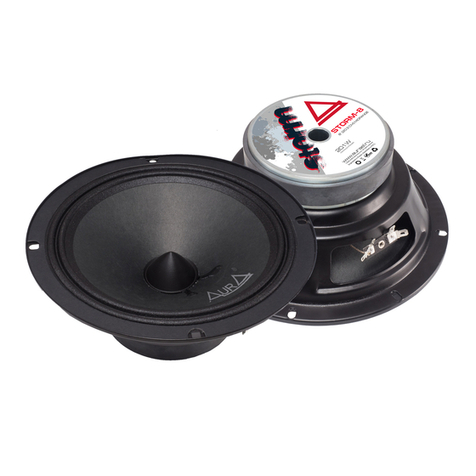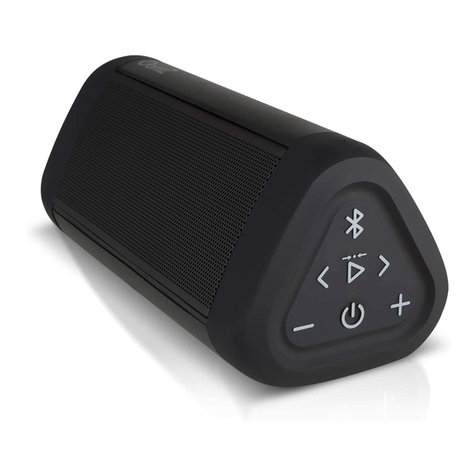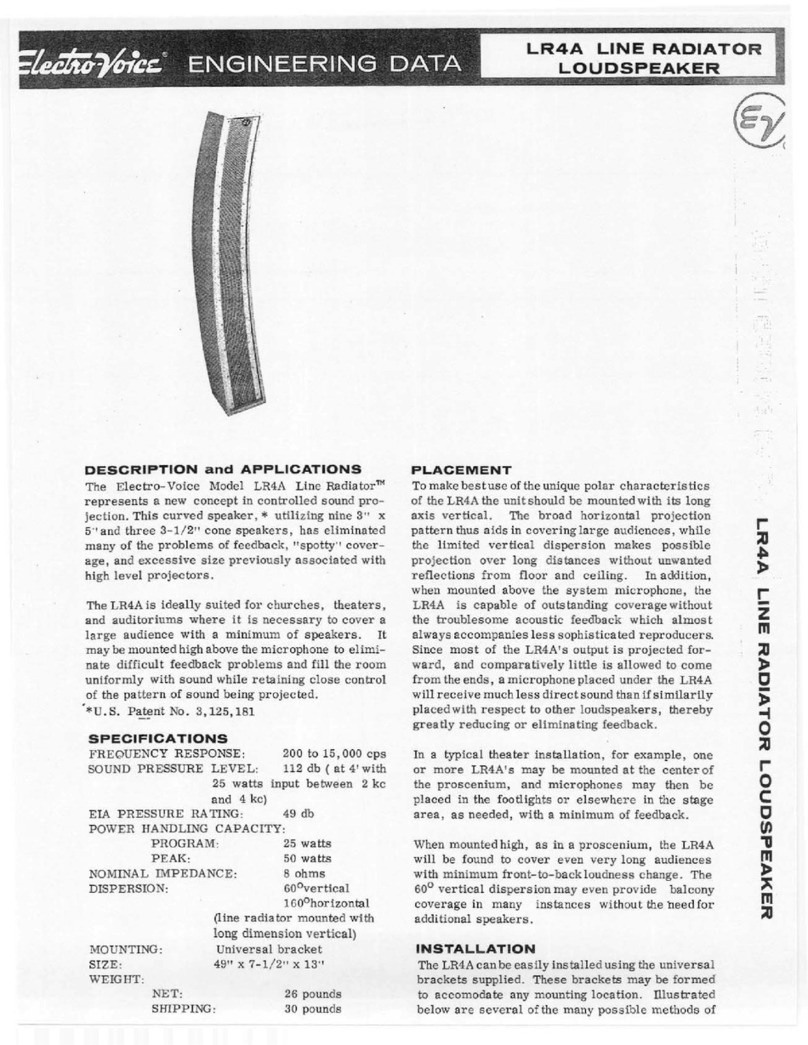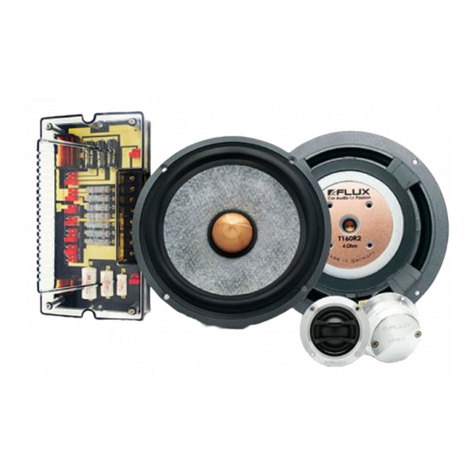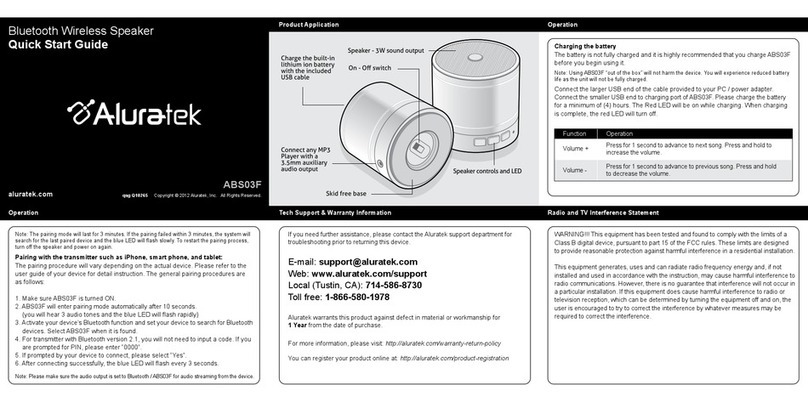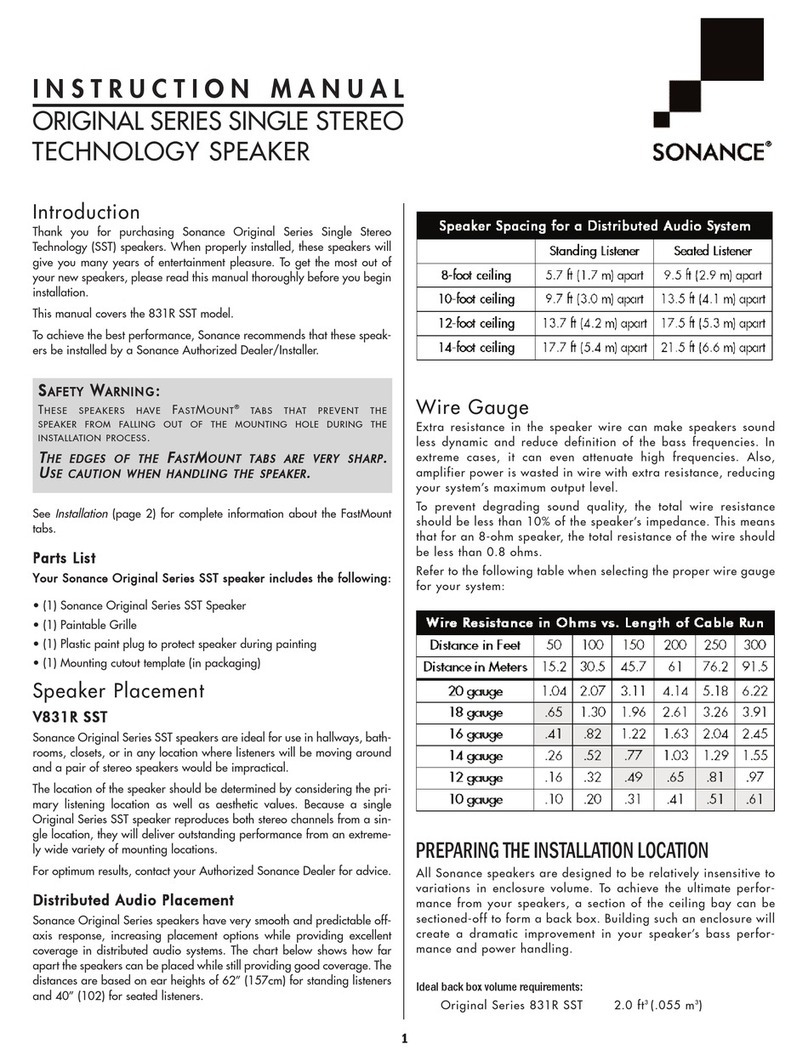2.3 CONNECTING YOUR SPEAKERS
Thetypesofcableusedtoconnectthespeakerstothepoweramplierwillmarginallyaffectthesound.The
cross-sectional area of the cable should be large enough so as not to affect the damping factor; generally a cable
with a cross-sectional area of 2.5 mm2, or greater is recommended. The Ellipse 8 Passive and 10 Passive terminal
panelsoffertheoptionofBi-Wiring.Bi-Wiringprovidesthefacilityforconnectingseparatefeedsfromtheampliertothe
Low Frequency and High Frequency sections of the crossover network. This method of connection can provide better
instrument separation, localisation, and imaging depth compared with conventional wiring for the cost of another set of
speaker cables. Bi-Wiring provides for separate feed and return cables for low frequencies and high frequencies, low
and high frequencies being differentiated by the crossover point of the loudspeaker system; please refer to the technical
specications.Thisreducesintermodulationeffectsathighandlowfrequencieswithinthecables.
Thelowertheresistanceofthecablebetweentheamplierandthespeakers,thebetterthedampingfactoractingonthe
speaker. This has been covered in every audio magazine that has ever been written about speakers, so we won’t beat it
todeathhere.Youdon’tneedtobuyspeakercablethatcostsasmuchasyourspeakers.Togetthemostbenet,select
anelystrandedhighpuritycopperspeakercableanddressthecableendstoprevent“hairs”orstrayconductorsfrom
shortingacrosstheterminals.Ifyouramplierterminalswillnotdirectlyacceptyourchosensizeofcable,youcantrim
downthecablesizeattheamplierend.Ensurethatthebindingpostretainingnutsonboththeloudspeakersandthe
amplierarescreweddownrmlywithoutstrippingorovertighteningthem.EllipsePassivemonitorsloudspeakersare
shipped ready for standard cable wiring with shorting bars connecting both halves of the crossover together. Keep the
shorting bars in place whilst connecting your cable if not using the Bi-Wire facility.
To Bi-Wire your loudspeakers remove the shorting bars completely from the terminals of the crossover panel. Prepare
2 sets of cables for each loudspeaker, labeling one for HF (High Frequencies) and the other for LF (Low Frequencies)
paying particular attention to the polarity of the conductors within the cable. Keep positive and negative conductors
(Red and Black) connected to the respective red and black terminals. Parallel both positive conductors and both negative
conductorstogetherforthelefthandcablesatthelefthandamplierterminals.Repeatfortherighthandloudspeaker
andconductorsattherighthandamplierterminals.
2.4 OBSERVING POLARITY
Youalreadyknowaboutconnectingthepositiveterminalontheampliertothepositiveterminalonthespeakers,and
ensuringthatbothchannelsare“inphase”bycheckingtoensurethatthere’smorebasswithbothspeakersonand
notlessbass.Absolutepolarityisabittrickiertoconrmbutisneverthelessveryimportant.Absolutepolarityisthe
maintenance of a positive pressure wave from the microphone capsule all the way through to the listener. A kick drum, for
instance, has the drum skin whacked by the foot pedal, and it pushes the air, which pushes the microphone diaphragm,
which generates a signal through the electronics and should eventually come out of the speakers as a positive acoustic
pressure wave. This means the speaker cones will move towards you, just like the drum skin. All Tannoy monitors have
absolute positive polarity which means that a positive going electrical input pulse to the red terminals will move the cones
towardsyou.However,youcan’ttrustaconventionalrecordedsourcetotestthisbecausethereisnowaytoconrmthat
absolute polarity was maintained throughout the recording chain; it can even change from track to track. This isn’t a trivial
thing,especiallywhenyou’reusingatruestereomicrophonesetup,ortryingtoaccuratelyplacethingsinyourmix.This
issomethingthatshouldberigorouslycheckedwitheverymicrophoneandeverysignallineinastudio;buttherststep
would be to use the kick drum test described above with a few microphones. If you don’t believe it can make a difference,
setupalittletestusingamixyouknowandipthepolarityofbothmonitorchannelsatthesametime.Theimagingwill
ipfromvague(negativepolarity)tostrong(positivepolarity).Hear-Believe!
2.5 POWER AMPLIFIERS
Thepowerampliershouldbereasonablywellmatchedinpowertothepowerratingofthespeakers(seespecications).
Theuseofamorepowerfulamplier(i.e.inexcessoftherecommendedgure)providesincreasedheadroom,which
is useful especially for highly dynamic programme material. Due to the high peak power handling of Tannoy monitors,
responsibleuseofmorepowerfulampliersshouldnotrepresentadangertothespeakersaslongastheampliersare
not overdriven.

